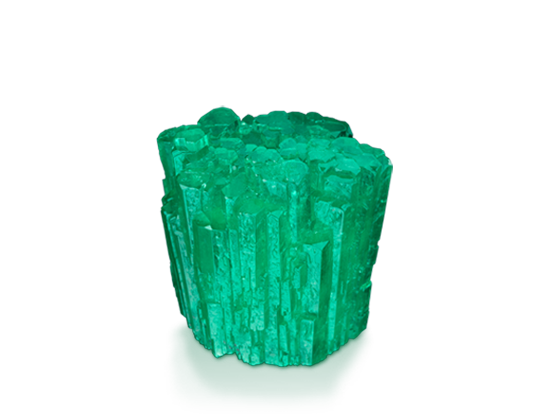OVERVIEW
Gem experts differ on the degree of green that makes one stone an emerald and another stone a less-expensive green beryl. Most gemologists, gemological laboratories, and colored stone dealers call a stone green beryl when its color is “too light” for it to be classified as emerald. Even among that group, however, there’s a difference of opinion about what’s considered “too light.”
Emerald is the green to greenish blue variety of beryl, a mineral species that also includes aquamarine as well as beryls in other colors.
Gem experts differ on the degree of green that makes one stone an emerald and another stone a less-expensive green beryl. Some people in the trade tend to give the name emerald to any green beryl colored by chromium. But to most gemologists, gemological laboratories, and colored stone dealers, it is more correct to call a stone green beryl when its color is “too light” for it to be classified as emerald. Even among that group, however, there’s a difference of opinion about what’s considered “too light.”
GIA uses lab-graded comparison stones to determine if the green color is dark enough and saturated enough to be called emerald.
- Mineral: Chrysoberyl
- Chemistry: BeAl2O4
- Color: Bluish green in daylight, purplish red in incandescent light
- Refractive Index: 1.746 to 1.755
- Birefringence: 0.008 to 0.010
- Specific Gravity: 3.73
- Mohs Hardness: 8.5
WHERE IS IT FOUND ?
The May birthstone is also found in the state of Minas Gerais, Brazil. One of the most productive sites for the green birthstone is the sophisticated Belmont mine. Capoeirana is another important locality, a rugged region worked largely by independent miners and small-scale operations.
CARE & CLEANING
Emerald is a 7.5 to 8 on the Mohs scale of hardness, so it is more susceptible to scratching than a diamond, which ranks 10 on the scale. The May birthstone is often treated to improve its color or clarity. Common treatment methods include:
1. Dyeing: Paler emeralds with multiple fractures may be dyed green to enhance their color.
2. Fracture Filling: Oils, waxes, and artificial resins are often used to fill surface-reaching fractures in emeralds. The goal is to reduce the visibility of the fractures and improve the apparent clarity. The volume of filler material present can range from minor to significant; the different substances have varying degrees of stability.
The emerald birthstone requires some special care: Avoid exposure to heat, changes in air pressure (such as in an airline cabin) and harsh chemicals. Never put an emerald in an ultrasonic cleaner, as the vibrations and heat can cause the filler to sweat out of fractures. Filled emeralds can also be damaged by exposure to hot water used for washing dishes. The safest way to clean emeralds is to gently scrub them with a soft brush and warm, soapy water.
BIRTHSTONE
HISTORY
Emerald’s lush green has soothed souls and excited imaginations since antiquity. Its name comes from the ancient Greek word for green, “smaragdus.” Rome’s Pliny the Elder described emerald in his Natural History, published in the first century AD: “…nothing greens greener” was his verdict. He described the use of emerald by early lapidaries, who “have no better method of restoring their eyes than by looking at the emerald, its soft, green color comforting and removing their weariness and lassitude.” Even today, the color green is known to relieve stress and eye strain.
There are other green gems, like tourmaline and peridot, but emerald is the one that’s always associated with the lushest landscapes and the richest greens. Ireland is the Emerald Isle. Seattle, in the US state of Washington, is the Emerald City. Thailand’s most sacred religious icon is called the Emerald Buddha, even though it’s carved from green jadeite.
The first known emerald mines were in Egypt, dating from at least 330 BC into the 1700s. Cleopatra was known to have a passion for emerald, and used it in her royal adornments.
Source of Content : www.gia.edu


